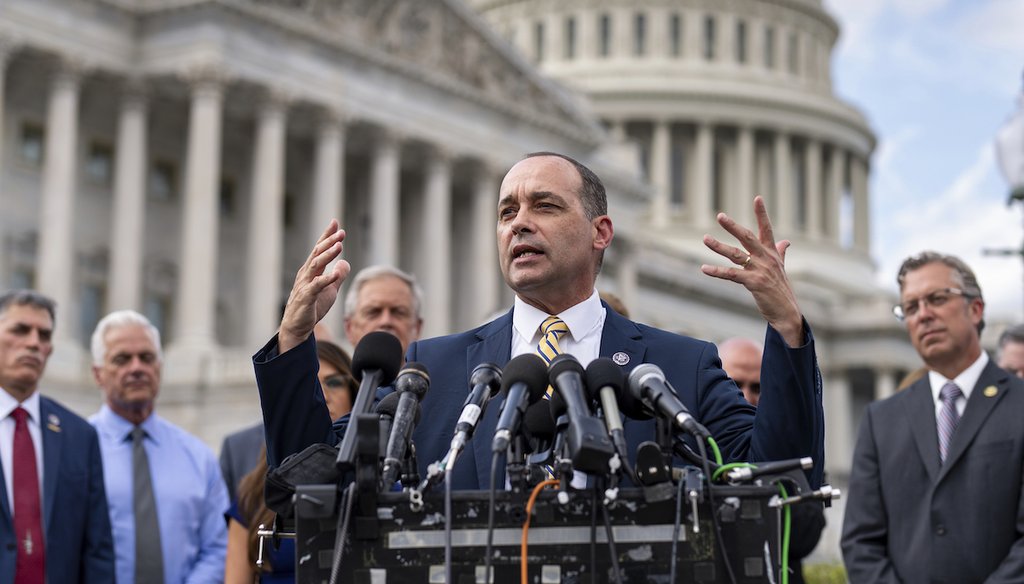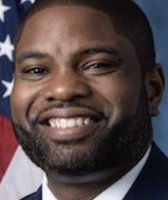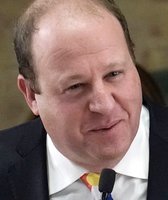Stand up for the facts!
Our only agenda is to publish the truth so you can be an informed participant in democracy.
We need your help.
I would like to contribute

Rep. Bob Good, R-Va., and members of the conservative House Freedom Caucus hold a news event outside the Capitol on Sept. 12, 2023. Members of the caucus are pressuring House Speaker Kevin McCarthy, R-Calif., to cut the federal budget. (AP)
Americans could be looking at another federal government shutdown.
Current funding for the federal government expires Sept. 30. If lawmakers and the president cannot agree on legislation to extend federal spending, most federal agencies will shut down until new spending legislation can be passed by both chambers of Congress and signed by President Joe Biden.
For now, the key holdup is the House, where House Speaker Kevin McCarthy, R-Calif., is trying, so far unsuccessfully, to get the conservative and moderate wings of his conference to support a funding bill that the Senate and Biden can sign.
Here’s what happens when government funding expires.
Federal government shutdowns occur when spending bills expire, and when Congress and the president (or different chambers of Congress) find themselves at an impasse.
Shutdowns have a constitutional basis, from Article I, Section 9, which says, "No Money shall be drawn from the Treasury, but in Consequence of Appropriations made by Law."
This has been reinforced by the Antideficiency Act, which stems from an 1870 law that has been revised periodically over the years. There is some leeway to continue certain federal activities that are deemed essential.
There have been 20 shutdowns since 1976, according to the Congressional Research Service.
However, the impact of these shutdowns has changed significantly since 1980.
Prior to 1980, many federal agencies continued to operate during funding gaps, under the assumption that money would be restored soon and that Congress didn’t intend for them to close down. But in 1980 and 1981, then-Attorney General Benjamin Civiletti issued two opinions that required agency heads to suspend operations until funding began to flow again.
The only activities that could go forward, Civiletti wrote, were those where there is a connection "between the function to be performed and the safety of human life or the protection of property," or where otherwise "authorized by law."
Some post-1980 shutdowns were devoid of partisan warfare and quickly resolved. That changed in the mid-1990s, when President Bill Clinton squared off against a new Republican majority in the House and Senate. One shutdown lasted for five days in November 1995, and the other went on for 21 days, from December 1995 to January 1996.
After 17 years without a shutdown, President Barack Obama, a Democratic-controlled Senate and a Republican-controlled House failed to reach an agreement on spending, resulting in a two-week shutdown in 2013.
During the presidency of Donald Trump, there were two shutdowns, a two-day gap in January 2018 and a 34-day closure from late December 2018 to late January 2019. The latter was easily the longest on record. In the 2018-2019 shutdown, some departments and agencies were able to continue their work because their funding had already been enacted, but most saw funding lapse and went into shutdown mode.
The Senate Appropriations Committee has passed all 12 standard appropriations bills with bipartisan support. But the House has not, despite the efforts of House Speaker Kevin McCarthy, R-Calif.
So far, McCarthy has been unable to find a solution that can win near-unanimous support among Republicans. The House Republican majority has a five-seat edge, and a relatively small band of the most conservative members is seeking deeper cuts than more moderate members of their conference are willing to support. In a law enacted earlier this year, McCarthy and Biden agreed to set spending caps, but some conservatives have said they want to lower those caps further.
McCarthy could probably pass legislation with the support of both House Republicans and Democrats, but doing so could put his speakership at risk. Members of the conservative wing could put his continued leadership up for a vote at any time, and he might not have the votes to survive it.
President Joe Biden is opposed to deep federal cuts, and even many Senate Republicans are skeptical of the House conservatives’ approach. Senate Minority Leader Mitch McConnell, R-Ky., urged Republicans to come to an agreement, saying Sept. 19 that government shutdowns have "always been a loser for Republicans, politically."
Often, Congress agrees to pass a "continuing resolution" that would win the president’s support. Such legislation temporarily extends funding at or close to its previous level in order to preempt a shutdown. This gives lawmakers time to negotiate a longer-term funding bill. But hard-liners might resist backing a continuing resolution if they feel that veering closer to a shutdown gives them greater leverage in negotiations.
In recent shutdowns, between 800,000 and 850,000 federal workers were furloughed per day, or close to 40% of the roughly 2.2 million workforce (not counting active-duty military personnel and U.S. Postal Service workers).
Civiletti’s guidance for retaining employees whose jobs involve public safety and the protection of property continues to determine who works and who doesn’t.
The decisions about individual positions have traditionally been made by senior executives and legal advisors at each agency. In addition, work by federal contractors can be heavily impacted.
Employees who are required to work are not paid until a new spending bill is passed — meaning they are effectively working for free, at least temporarily.
But both furloughed and non-furloughed workers were historically compensated for back pay through subsequent congressional action, even though there was no requirement that such a bill be passed.
This guarantee of payment after the shutdown ends was written into law after the 2018-19 shutdown.
Working while on furlough during a shutdown is not merely discouraged; in most cases, working for the federal government on a voluntary basis is against the law.
Work is barred "except to perform minimal activities as necessary to execute an orderly suspension of agency operations," according to the Office of Personnel Management.
Federal employees theoretically could take another job during their furlough period, but they would have to run a gauntlet of ethical approvals that makes this option unlikely. They also may qualify for unemployment insurance, although the turnaround time for receiving benefits from their jurisdiction may reduce the feasibility of this option.
Active-duty military personnel have always been required to work through shutdowns. Army troops don’t abandon their posts, and naval ships don’t all return to port. In addition, many civilian workers in the Defense Department have been ordered to work through shutdowns.
Other civilian workers in the Defense Department, however, hold jobs that do not meet the urgency threshold to keep working. For instance, during the 2013 shutdown, the government furloughed about half of its civilian workers, or about 400,000 employees, leaving a patchwork of various permissible and impermissible activities.
Meanwhile, veterans’ health services generally continue unabated.
During a shutdown, some government functions may continue, either because Congress has already passed a spending bill for a particular department, an agency is reliant on funding other than congressional appropriations, or a function is considered vital for the safety of human life or the protection of properties.
However, many activities cease for as long as a shutdown lasts. Here are just a few activities that have stopped during one or more of the past shutdowns, as collected by the Congressional Research Service and the Committee for a Responsible Federal Budget.:
- New patients were not accepted into clinical research at the National Institutes of Health, and hotline calls about diseases went unanswered.
- The Centers for Disease Control and Prevention ceased disease surveillance.
- Recruitment and testing of federal law enforcement officials stopped, in one case including the hiring of 400 border patrol agents.
- National Park Service sites and national museums and monuments closed to visitors.
- Visa and passport services stopped.
- Inspections for food, consumer products, workplace safety, hazardous waste sites and drinking water infrastructure could not be carried out.
- The Internal Revenue Service was unable to verify income and Social Security numbers, potentially delaying mortgage and loan approvals.
- Travelers faced longer waits at airports as unpaid security screeners and air traffic controllers exhibited higher absentee rates.
The mail will keep coming because the U.S. Postal Service is not dependent on federal appropriations for its day-to-day operations.
In many cases, federal courts have shifted money around to keep key operations running during previous shutdowns, though some functions — such as the handling of civil cases and building maintenance — were affected. If the shifted money eventually ran out, many court duties would be considered essential, meaning that judges and other core staffers would avoid being furloughed.
Because of a constitutional prohibition against cutting judicial pay, judges and Supreme Court justices would keep collecting paychecks. Other court staff may need to wait for their paychecks until the shutdown ends.
If past is prologue, then yes.
Social Security is a mandatory program supported by a trust fund, so Social Security benefits don't have to be formally approved by Congress every year. However, the Social Security Administration employees who cut the checks and stuff the envelopes are paid through appropriated funds.
The question about a government shutdown is whether those employees would be kept from going to work and, if so, whether the checks would sit idle rather than arrive in mailboxes nationwide. (This is also a relevant question for other types of federal payments, such as veterans’ benefits.)
Historically, shutdown regulations have been flexible enough to let federal workers carry out core Social Security functions, so checks have always gone out in the past. However, some activities, such as the issuance of new Social Security cards, may not continue during a shutdown.
More than 80% of federal workers are based outside the Washington, D.C., metro area, which means the impact would be felt nationally.
Government and private analysts have also estimated a negative effect on the broader economy.
The Congressional Budget Office estimated that the 2018-2019 shutdown reduced economic output by $11 billion in the following two quarters, including $3 billion that the U.S. economy never regained.
A thorough examination of the 2013 shutdown by the Office of Management and Budget found:
• $2.5 billion in compensation costs for furloughed workers (whose lack of pay for two weeks hampered consumer spending).
• 120,000 fewer private-sector jobs created in the first half of October.
• $500 million lost in visitor spending because of closed national parks.
• $11 million in lost National Park Service and Smithsonian Institution revenue.
• Interest accrued on billions of dollars of payments owed to third parties that the government was unable to pay during the shutdown.
• Resources spent on putting activities in standby or maintaining them in an idle mode;
• 1.2 million Internal Revenue Service identity verification requests that couldn’t be processed, causing a delay in private-sector lending and other activities.
• Stalled approvals from the U.S. Food and Drug Administration delayed moving products to market.
In 2013, Mark Zandi, chief economist for Moody’s Analytics, said the shutdown stunted fourth quarter GDP growth by 0.5 points, resulting in a $20 billion hit. Standard & Poor's said the shutdown took $24 billion out of the economy and reduced yearly fourth-quarter growth of gross domestic product by 0.6%.
When Sen. Rand Paul, R-Ky., said in 2014 that "it cost us more to shut the government down than to keep it open," we rated it True.
As disruptive as a government shutdown would be, hitting the debt limit would be worse.
The debt limit, sometimes called the debt ceiling, approximates the credit limit on a credit card. It’s a dollar figure that constrains how much debt the federal government can carry at a given time to pay for its operations.
If lawmakers and the president fail to raise or suspend the debt limit, the United States cannot cover its bills — not just checks to older Americans, veterans and federal employees but also payments to bondholders — a development that could ripple through the U.S. economy and the global financial markets.
Our Sources
Congressional Research Service, "Federal Funding Gaps: A Brief Overview," Sept. 7, 2023
Congressional Research Service, "Past Government Shutdowns: Key Resources," Sept. 13, 2023
Congressional Research Service, "Government shutdowns and executive branch operations: frequently asked questions (FAQ)," Sept. 14, 2023
U.S. Office of Personnel Management, "Guidance for Shutdown Furloughs," accessed Sept. 20, 2023
Congressional Research Service, "Shutdown of the federal government: causes, processes and effects," Nov. 30, 2017
Congressional Research Service, "Government shutdown: operations of the Department of Defense during a lapse in appropriations," Oct. 15, 2013
Office of Management and Budget, "Agency contingency plans," accessed Jan. 17, 2018
Congressional Budget Office, "The effects of the partial shutdown ending in January 2019," Jan. 28, 2019
Committee for a Responsible Federal Budget, "Government shutdowns Q&A: everything you should know," Sept. 5, 2023
Brookings Institution, "What is a government shutdown? And why are we likely to have another one?" Sept. 17, 2023
Joint Economic Committee Democratic staff, "The economic costs of a Republican shutdown," Sept. 5, 2023
Federal News Network, "What happens to furloughed employees during a government shutdown?" Sept. 20, 2023
Federal News Radio, "Defense Department to bring back most employees from shutdown furlough," Oct. 5, 2013
Reuters, "Factbox: What happens in a U.S. government shutdown?" Jan. 18, 2017
Washington Post, "Congress asked the IRS to implement a massive new law. Now it could send more than half its workers home," Jan. 19, 2018
The Hill, "McConnell: Government shutdowns are ‘a loser for Republicans,’" Sept. 19, 2023
Washington Post, "A federal government shutdown looks more and more likely: What to know," Sept. 20, 2023
PolitiFact, "The debt limit fight: Why does it matter? How could it be resolved?" Jan. 19, 2023
PolitiFact, "Would the military shut down if the federal government does?" Jan. 17, 2018
PolitiFact, "Rand Paul rightly says the government shutdown was more expensive than keeping it open," Aug. 7, 2014
PolitiFact, "Paul Ryan says government shutdown wouldn't sideline Obamacare," Aug. 8, 2013
PolitiFact, "Newt Gingrich says shutdowns are 'normal' process, with 12 under Tip O’Neill and two under Gingrich," Oct. 4, 2013
PolitiFact, "Barack Obama said Social Security and other federal checks may not go out on Aug. 3 if the debt ceiling is not increased," July 13, 2011
PolitiFact, "Debbie Stabenow says government shutdown ‘could disrupt’ veterans' benefits," April 6, 2011


































